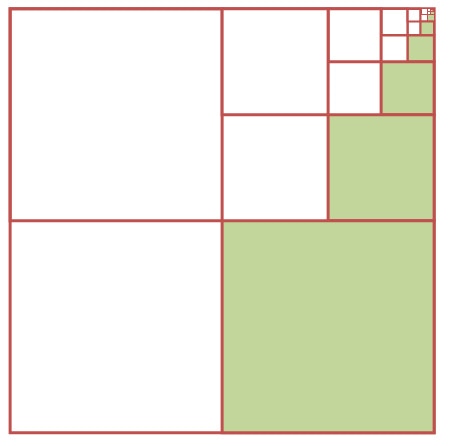
Geometric_series
A note from early college explaining the summation of infinite series.
Steve Trettel
|
Geometric series are often one of the first examples one sees of the idea of an infinite sum converging to a finite number, and in fact they are simple enough that we can even derive a formula for the general case
$$\sum_{n=1}^\infty \frac{1}{r^n}=\frac{1}{r-1}$$
Here we will first look at a few specific examples where $r$ is a small integer, in order to gain intuition for what summing infinitely many things means.
$$\frac{1}{2}+\frac{1}{4}+\frac{1}{8}+\cdots$$
The first infinite series that we should think about is the sum of the reciprocals of the powers of 2. Writing out the first couple of terms of this infinite sum we see
$$\sum_{n=1}^\infty\frac{1}{2^n}=\frac{1}{2}+\frac{1}{4}+\frac{1}{8}+\frac{1}{16}+\frac{1}{32}+\frac{1}{64}+\frac{1}{128}+\frac{1}{256}+\frac{1}{512}+\frac{1}{1024}\cdots$$
Clearly, the successive terms are dropping in size, and quickly at that! But why should we believe that the entire sum onverges to some finite value? Remember, the sum $1+\frac{1}{2}+\frac{1}{3}+\cdots$ does not converge, even though the terms get smaller and smaller forever.
Well, let’s start out by trying to draw a picture of our sum. I’m going to start by drawing a square of area $1$, and for each term in the sum I will try to color in a chunk of the square with that area. For example here are my pictures for the first three partial sums:
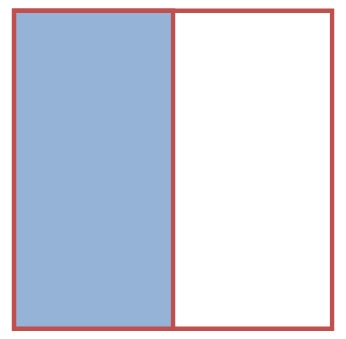
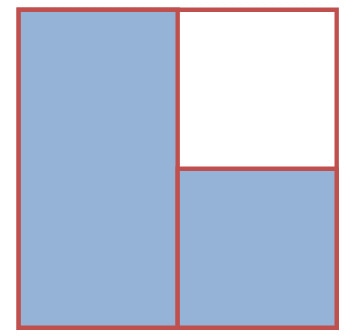
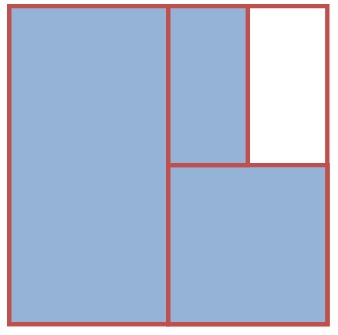
From here, it should be clear that the sum does not escape to infinity. Each time we need to add a new term, we just use half of the remaining white space of the square. All of our partial sums are represented by the blue portion of the square, and since the total square area is 1, the blue area can never exceed 1. So, we have a definite upper bound on the value of our sum,
$$\sum_{n=1}^\infty\frac{1}{2^n}\leq 1$$
Can we use this pictorial technique to calculate its exact value? Let’s keep going and see! To add the next terms in the series, we just need to continue shading in half of the remaining whitespace.
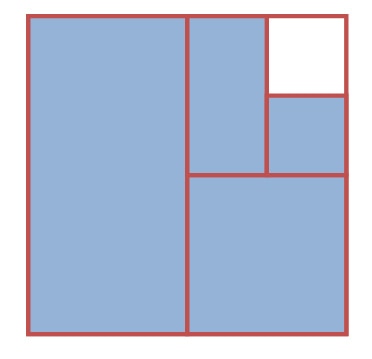
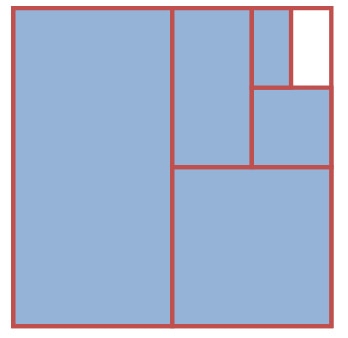
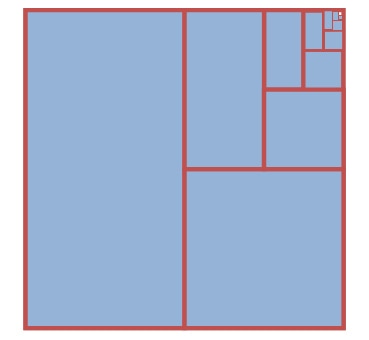
Where we have continually cut the white space over and over, adding it to our sum. As this process continues forever, the amount of whitespace tends to zero, and the amount of blue to 1. That is, the value of our sum tends to 1. That means we’ve found the sum of our series! $$\sum_{n=1}^\infty \frac{1}{2^n}=1$$
$$\frac{1}{4}+\frac{1}{16}+\frac{1}{64}+\cdots$$
Let’s now turn our thoughts to a similar series, namely the sum of the recriprocals of powers of 4. We can ask ourselves the same two questions about this series: namely, does it converge to some finite value, and if so which value? It just so happens we can answer both of them with a similar process to the above. Lets begin again with the unit square, and to represent the first term of this series $(1/4)$, lets shade in a quarter of it green. The next term is $(1/4)^2$, or a fourth of one forth. We can represent this term by taking one of the remaining white squares, and coloring in a quarter of it, and similarly for the third term.

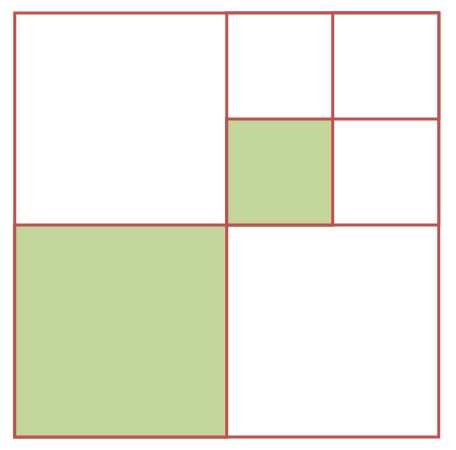
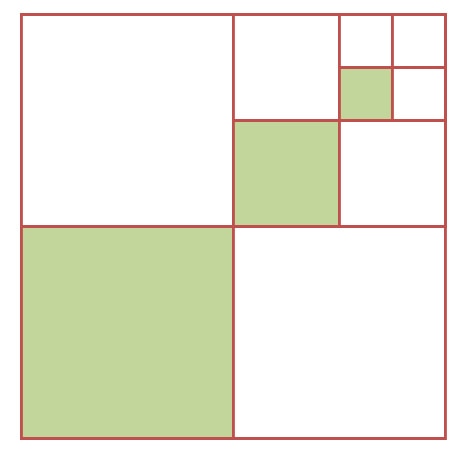
In the limit, as we allow the number of terms to grow without bound, we keep doing this forever and get a diagonal of smaller and smaller green squares. Like before, we can see that all of the green squares are contained within the original square, and so the value of this sum is less than 1.
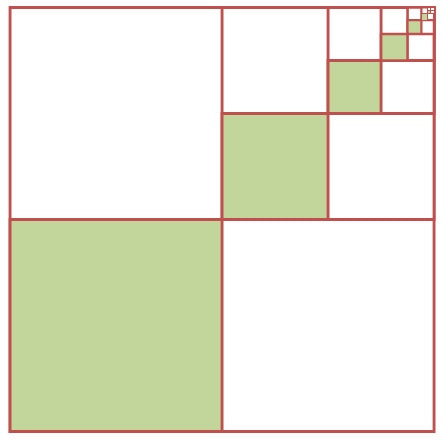
To calculate its exact value this time though we are going to have to be a little more clever. First, notice that directly to the right of every green square is a white square of exactly the same area, and so we can slide each green square over “one to the right” to get another collection of squares of the same area. Likewise, there is a square above each green square of the same area so we can slide them “up one” as well.
But thats kind of amazing! We have found three copies of our sequence of green squares (whose total area represents the value of the infinite sum) inside of the original square. Let’s draw them in there all at once.
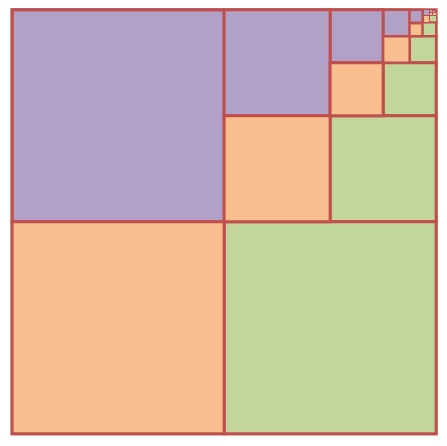
This fills the entire square! (More precisely, at stage $n$ the uncolored area is $1/4^n$ which goes to $0$ as $n\to\infty$). As these three collections of squares share no overlap, this means that three times the area of our sequence of squares is the area of the original square (which was 1). And so, the area of our sequence must be $1/3$!
$$\sum_{n=1}^\infty \frac{1}{4^n}=\frac{1}{3}$$
$$\frac{1}{3}+\frac{1}{9}+\frac{1}{27}+\cdots$$
Before trying to tackle the general case, let’s do one more example. If we want to sum the reciprocal powers of 3 we could start by dividing a square into thirds, and then successively dividing one of those thirds into thirds…
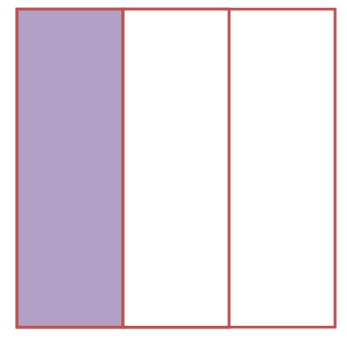
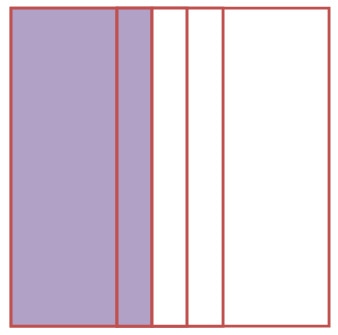
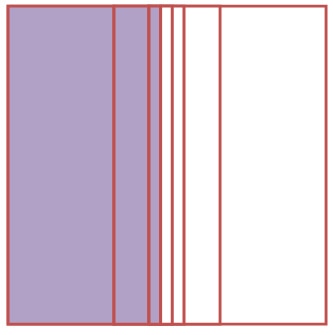
Now, notice that instead of coloring the leftmost rectangle each time I could have instead colored the rightmost rectangle, and so fit two copies of my sequence of areas inside of the square.
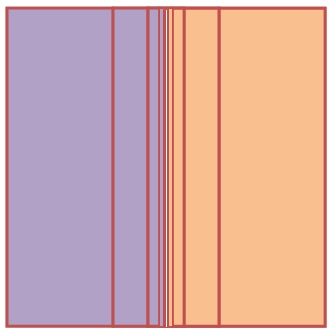
And again, it turns out that these two copies fill up the original square completely, and without overlap (the uncolored portion of the square at step $n$ has area $1/3^n$ which is going to $0$ as $n\to\infty$. Thus, twice the sum of our series is $1$ and so $$\sum_{n=1}^\infty \frac{1}{3^n}=\frac{1}{2}$$
The General Case
Starting from our examples, lets try to find a pattern in what we have computed: $$\sum_{n=1}^\infty\frac{1}{2^n}=1$$ $$\sum_{n=1}^\infty\frac{1}{3^n}=\frac{1}{2}$$ $$\sum_{n=1}^\infty\frac{1}{4^n}=\frac{1}{3}$$
It looks reasonable to guess that $\sum_{k=1}^\infty \frac{1}{p^k}=\frac{1}{p-1}$, so lets find a way to check and see.
To do so, it’ll be slightly more convenient to re-write things a bit, to fit with the way
they are ususally discussed in math books.
Notice that all of the series we have considered so far have started at $n=1$; that is, the first term is a fraction.
What if we started all the series at n=0?
The first term in all of them would then be 1 (since anything to the 0 power is 1),
so to convert all of our series to start at n=0, all we have to do is add 1 to our final
result (in our pictorial representation, this is equivalent to just adding a completely
filled in square adjacent to our square containing the series terms).
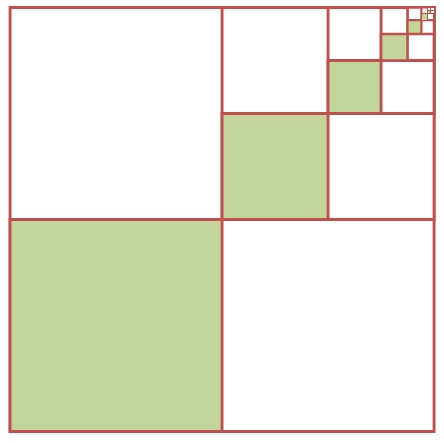
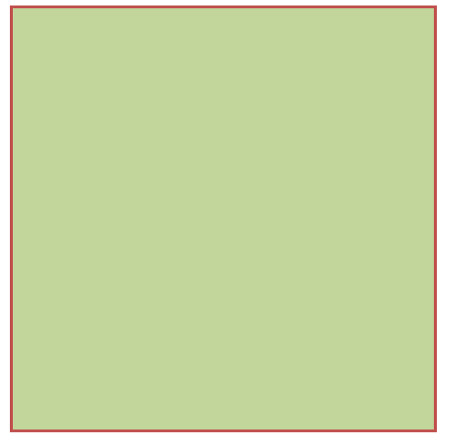
The new forms for our series (with 1 added to each of them) are
$$\sum_{n=0}^\infty\frac{1}{2^n}=2$$ $$\sum_{n=0}^\infty\frac{1}{3^n}=\frac{3}{2}$$ $$\sum_{n=0}^\infty\frac{1}{4^n}=\frac{4}{3}$$
If we let $r$ denote the fraction whose geometric multiples we are summing, we can write the right-hand side of each of these expressions ina nice, uniform way depending only on $r$:
$$\sum_{n=0}^\infty r^n=\frac{1}{1-r}$$
We will now try to come up with a uniform way to prove these equivalent statemetns. To start, lets go back to considering the sum of $1/2^n$. Instead of dividing up a unit square, for each term in the sequence lets draw a circle with that area. Since we are starting at $n=0$, our first circle will have area 1:
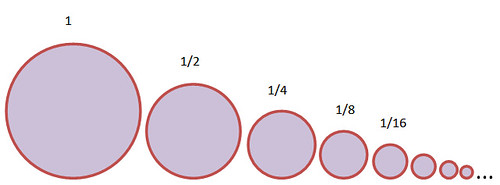
The total area of this series of circles is then the sum of our series.
Look what happens if we take each circle and squish it so that it has half the
area it used to:
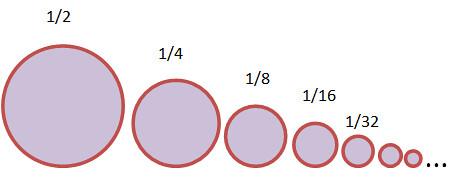
This series looks very similar to the original, and in fact it is nothing more than
the original with the first one cut off! That is, multiplying all the circles by $1/2$
was the same as shifting over by 1.
A stretch in the area direction was just a shift in the index direction.
So, what can we do with this? Well, lets look at what this says:

We can re-arrange this “equation” as follows

This lets us solve for the area of all the circles:

Which is exactly what we had found using our “old” method (remember now that our
answer is 1 larger because we have included the n=0 term).
In effect, we didn’t even have to look for some sneaky way to visualize the
series here in order to sum it, we just realized that since all the circle’s
areas were fractions of eachother, multiplying the entire list by that fraction
is equivalent to deleting the first term.
This is a much more powerful approach, because it lets us reason about series that
we would otherwise have a great difficulty finding the sum for if we were forced
to do it by cutting up squares and triangles. To see what I mean, we will consider
the much more general problem alluded to above. Let’s see if we can’t manage to
calculate the value of
$$\sum_{n=0}^\infty r^n$$
with our only constraint being that $|r|<1$. This would be intractable using the
“cut paste and slide” technique we had been going with,
because there’s no good way to see how to cut a square into 1/r “pieces”.
Instead, we will try looking at the series as a sum of the areas of a bunch of
circles (or any polygons really), where the area of the next one in the list is r
times the area of the previous one.

The first circle, as always has area 1, so that means the next one in our list must have area $r$.
What if we squish this entire list by a factor of $r$? Well then our first circle
would have an area r, our second circle would have an area r*r, and so on.
But this is just the list above missing its first term! In effect, squishing
the circles by a factor of r is the same as just removing the first term, or
subtracting 1. This lets us write the following equation in terms of our circle series.

Like before, from this we can conclude that

And hence that
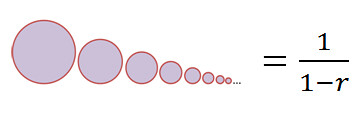
Exactly as we had aimed to prove!
So there you have it, that’s how to sum a geometric series.
